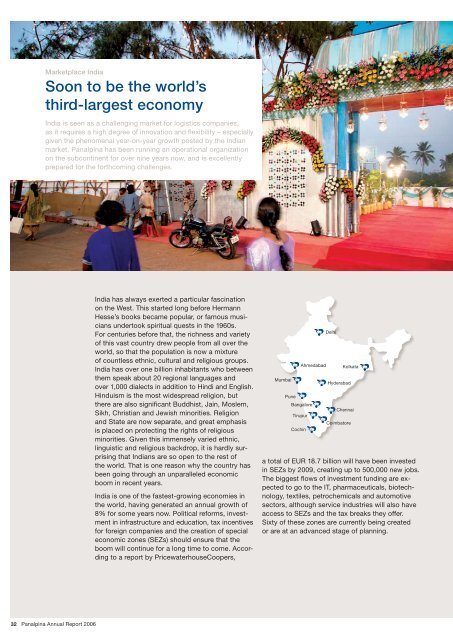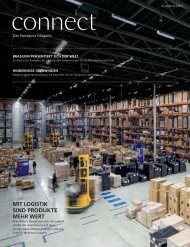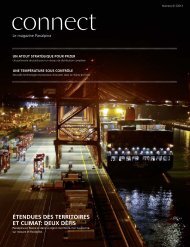Panalpina Annual Report 2006
Panalpina Annual Report 2006
Panalpina Annual Report 2006
Create successful ePaper yourself
Turn your PDF publications into a flip-book with our unique Google optimized e-Paper software.
Marketplace India<br />
Soon to be the world’s<br />
thirdlargest economy<br />
India is seen as a challenging market for logistics companies,<br />
as it requires a high degree of innovation and flexibility – especially<br />
given the phenomenal yearonyear growth posted by the Indian<br />
market. <strong>Panalpina</strong> has been running an operational organization<br />
on the subcontinent for over nine years now, and is excellently<br />
prepared for the forthcoming challenges.<br />
2 <strong>Panalpina</strong> <strong>Annual</strong> <strong>Report</strong> <strong>2006</strong><br />
India has always exerted a particular fascination<br />
on the West. This started long before Hermann<br />
Hesse’s books became popular, or famous musicians<br />
undertook spiritual quests in the 1960s.<br />
For centuries before that, the richness and variety<br />
of this vast country drew people from all over the<br />
world, so that the population is now a mixture<br />
of countless ethnic, cultural and religious groups.<br />
India has over one billion inhabitants who between<br />
them speak about 20 regional languages and<br />
over 1,000 dialects in addition to Hindi and English.<br />
Hinduism is the most widespread religion, but<br />
there are also significant Buddhist, Jain, Moslem,<br />
Sikh, Christian and Jewish minorities. Religion<br />
and State are now separate, and great emphasis<br />
is placed on protecting the rights of religious<br />
minorities. Given this immensely varied ethnic,<br />
linguistic and religious backdrop, it is hardly surprising<br />
that Indians are so open to the rest of<br />
the world. That is one reason why the country has<br />
been going through an unparalleled economic<br />
boom in recent years.<br />
India is one of the fastestgrowing economies in<br />
the world, having generated an annual growth of<br />
8% for some years now. Political reforms, investment<br />
in infrastructure and education, tax incentives<br />
for foreign companies and the creation of special<br />
economic zones (SEZs) should ensure that the<br />
boom will continue for a long time to come. According<br />
to a report by PricewaterhouseCoopers,<br />
Mumbai<br />
Pune<br />
Bangalore<br />
Tirupur<br />
Cochin<br />
Delhi<br />
Ahmedabad Kolkata<br />
Hyderabad<br />
Chennai<br />
Coimbatore<br />
a total of EUR 18.7 billion will have been invested<br />
in SEZs by 2009, creating up to 500,000 new jobs.<br />
The biggest flows of investment funding are ex<br />
pected to go to the IT, pharmaceuticals, biotechnology,<br />
textiles, petrochemicals and automotive<br />
sectors, although service industries will also have<br />
access to SEZs and the tax breaks they offer.<br />
Sixty of these zones are currently being created<br />
or are at an advanced stage of planning.



![Eigenes Luftfrachtnetzwerk [pdf | 244 KB] - Panalpina](https://img.yumpu.com/23347328/1/184x260/eigenes-luftfrachtnetzwerk-pdf-244-kb-panalpina.jpg?quality=85)
![Übersicht Panalpina [pdf | 240 KB]](https://img.yumpu.com/22547731/1/184x260/ubersicht-panalpina-pdf-240-kb.jpg?quality=85)

![Seefracht [pdf | 181 KB] - Panalpina](https://img.yumpu.com/22234724/1/184x260/seefracht-pdf-181-kb-panalpina.jpg?quality=85)



![Annual Report 2012 [pdf | 1 MB] - Panalpina](https://img.yumpu.com/15342099/1/184x260/annual-report-2012-pdf-1-mb-panalpina.jpg?quality=85)






